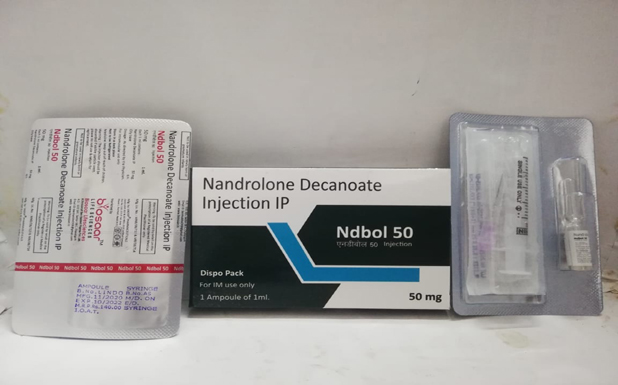Nandrolone is an androgen and anabolic steroid which mimics the effect of natural androgen hormone and is used in the treatment of anemias, cachexia (wasting syndrome), osteoporosis, breast cancer, and for other indications.
Anemias
Cachexia (wasting syndrome)
Osteoporosis
Nandrolone is an anabolic steroid occurring naturally in the human body, albeit in small quantities. Nandrolone increases production and urinary excretion of erythropoietin. It may also have a direct action on bone marrow. Nandrolone binds to the androgen receptor to a greater degree than testosterone which allows it to enter the nucleus and bind directly to specific nucleotide sequences of the chromosomal DNA. The areas of binding are called hormone response elements (HREs), and influence transcriptional activity of certain genes, producing the androgen effects.
Protein binding of nandrolone is 58%. IT is slowly released from the injection site into the blood with a half-life of 6 days.The ester is rapidly hydrolysed to nandrolone in the blood with a half-life of one hour or less. The half-life for the combined process of hydrolysis of nandrolone decanoate and of distribution and elimination of nandrolone is 4.3 hours. Nandrolone is unusual in that unlike most anabolic steroids, it is not broken down into the more reactive DHT by the enzyme 5α-reductase, but rather into a less effective product known as Dihydronandrolone.
Common side effect includes:
Ankle swelling
Breast enlargement
Edema (swelling)
Nausea
Feet swelling
Swelling of legs
Acne
Pregnancy
Breast-feeding
Porphyria
Severe kidney impairment
Prostate cancer
Breast cancer especially with high calcium levels

| Nandrolone | 50 mg |
